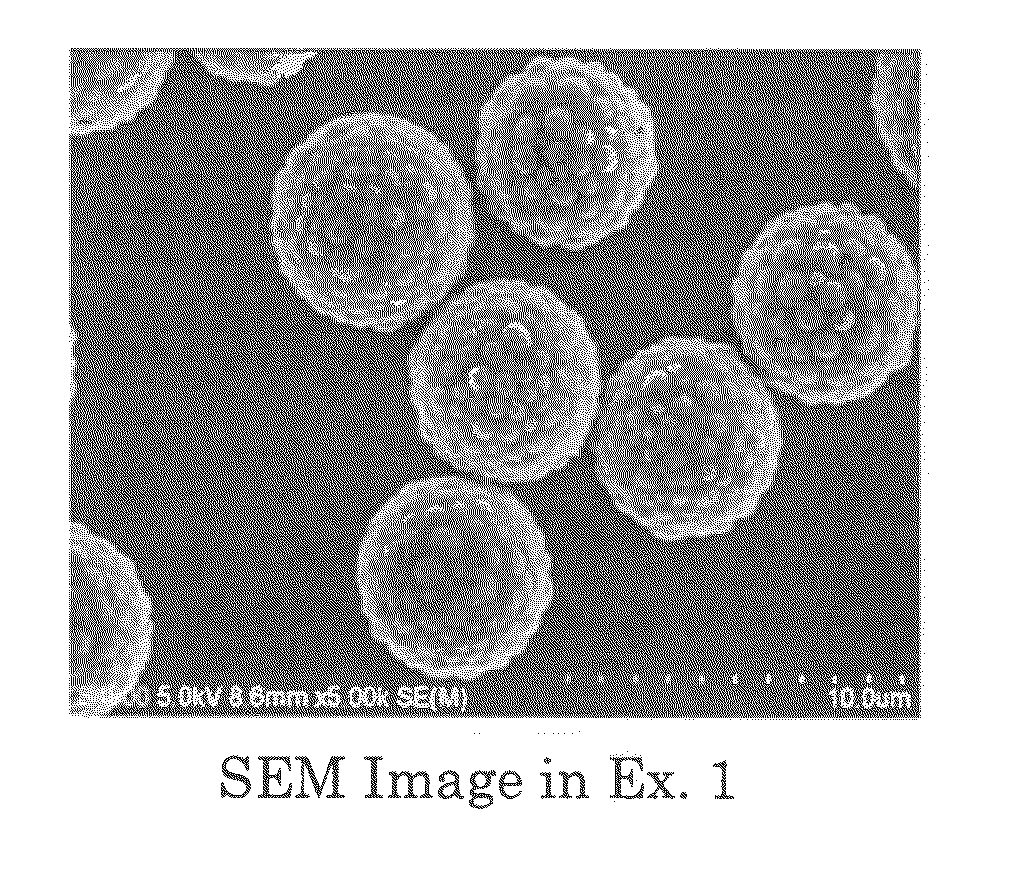Toner, image forming apparatus, image forming method and process cartridge
a technology of toner and image forming apparatus, applied in the field of electrostatic image developing toner, can solve the problems of poor cleanability, low heat resistance to be localized, and degradation of transfer efficiency, and achieve the effects of excellent heat resistance storage stability, excellent chargeability, and good heat resistance storage stability
- Summary
- Abstract
- Description
- Claims
- Application Information
AI Technical Summary
Benefits of technology
Problems solved by technology
Method used
Image
Examples
example 1
Preparation Step of Oil Phase
[0271]A container to which a stirring rod and a thermometer had been set was charged with [polyester 1] (545 parts), [paraffin wax (melting point: 74° C.)] (181 parts) and ethyl acetate (1,450 parts). The mixture was increased in temperature to 80° C. under stirring, maintained at 80° C. for 5 hours, and cooled to 30° C. for 1 hour. Then, the container was charged with [masterbatch 1] (500 parts) and ethyl acetate (100 parts), followed by mixing for 1 hour, to thereby obtain [raw material solution 1].
[0272][Raw material solution 1] (1,500 parts) was placed in a container, where the pigment and the wax were dispersed with a bead mill (“ULTRA VISCOMILL,” product of AIMEX CO., Ltd.) under the following conditions: a liquid feed rate of 1 kg / hr, disc circumferential velocity of 6 m / s, 0.5 mm-zirconia beads packed to 80% by volume, and 3 passes. Next, a 66% by mass ethyl acetate solution of [polyester 2] (655 parts) was added thereto, and passed once with the...
example 2
[0280][Toner base 2] was obtained in the same manner as in Example 1, except that [polyester 2] was changed to [polyester 3]. Through observation of the obtained [toner base 2] under a scanning electron microscope, the vinyl resin was found to be uniformly fused with the surfaces of the toner core particles.
example 3
[0281][Toner base 3] was obtained in the same manner as in Example 1, except that [polyester 2] was changed to [polyester 3] and that [fine resin particle dispersion liquid 1] was changed to [fine resin particle dispersion liquid 2]. Through observation of the obtained [toner base 3] under a scanning electron microscope, the vinyl resin was found to be uniformly fused with the surfaces of the toner core particles.
PUM
| Property | Measurement | Unit |
|---|---|---|
| sphericity | aaaaa | aaaaa |
| acid value | aaaaa | aaaaa |
| diameter | aaaaa | aaaaa |
Abstract
Description
Claims
Application Information
 Login to view more
Login to view more - R&D Engineer
- R&D Manager
- IP Professional
- Industry Leading Data Capabilities
- Powerful AI technology
- Patent DNA Extraction
Browse by: Latest US Patents, China's latest patents, Technical Efficacy Thesaurus, Application Domain, Technology Topic.
© 2024 PatSnap. All rights reserved.Legal|Privacy policy|Modern Slavery Act Transparency Statement|Sitemap



